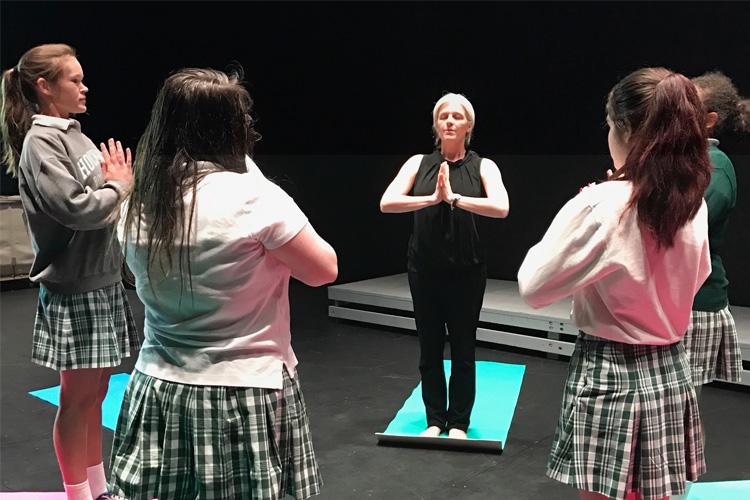Study for Spanish test. Edit English essay. Finish math homework. Soccer practice. Sound familiar? For some students, the list of to-do’s can go on and on, leading to overwhelming amounts of stress.
Countless studies have shown the negative impact of stress on teenagers and children and the importance of mindfulness, defined by the Oxford English Dictionary as “a mental state achieved by focusing one’s awareness on the present moment, while calmly acknowledging and accepting one’s feelings, thoughts and bodily sensations, used as a therapeutic technique.”
Mindfulness has been proven to not only improve overall health, but also to benefit performance in the classroom and beyond by various researchers such as Kirk Strosahl, Ph.D., and Patricia Robinson, Ph.D., authors of “In This Moment: Five Steps to Transcending Stress Using Mindfulness and Neuroscience”.
Upper School formerly had a mindfulness program, commonly known as Whole Girl, but it was discontinued after the 2014-2015 school year.
Upper School Counselor Judy Ware said that “Whole Girl was discontinued because the students weren’t enjoying it anymore.”
The advisors leading the Whole Girl programs pushed for its discontinuation, but Ware said there are plans to create a modified mindfulness and character development program when the new Head of School is installed.
Despite the lack of a formal mindfulness program for Upper School, some students and teachers are attempting to de-stress and relax through teacher-led activities and student clubs. Upper School drama teacher Emily Grey, for example, began leading meditation sessions in the Lacerte Family Black Box Theater this year. Last school year, Upper School French teacher Molly Monaco led yoga sessions with her advisory. Both yoga and meditation are common techniques to improve mindfulness.
Senior Kate Keough and sophomore Rachel Curry are leading the knitting club this year. Aside from working with needles and yarn, the knitters relax and take time to de-stress.
The club consists of roughly 50 students, with an average of 20 attending each meeting. During the informal meetings more experienced knitters help novices knit in a relaxing atmosphere.
“My junior year I started knitting because junior year is super stressful and I needed something to relax and take my mind off things, and it became a hobby that I really enjoy.” Keough said. Keough created the club her senior year to spread her hobby.
But mindfulness can be instilled at an early age. With that in mind, Lower School is implementing organized activities to help young girls improve mindfulness to succeed in school and life as a whole.
Randal Rhodus, Head of Lower School, said that mindfulness curriculums are appearing in schools frequently, specifically to teach children how thinking about their emotions can help them in the classroom.
“Mindfulness techniques can be used in all types of situations.” Rhodus said. “Learning these techniques is especially important for younger children who don’t have all the skills to regulate their emotions.”
The Lower School faculty is incorporating mindfulness curriculum into the classroom this year. They are teaching students how their brains work and where their emotions come from.
To give more structure to the program, Lower School counselor Susan Hawthorne comes into each homeroom weekly to discuss mindfulness with students and strategies to “find calm” through meditation and breathing techniques.
“It’s extremely important for these girls to find time to relax.” Hawthorne said.
Hawthorne focuses on relaxation techniques like deep breathing, yoga chimes and body scans, in which one focuses on relaxing the body from head to toe.
She began implementing these techniques three years ago when she noticed girls were tired but had trouble falling asleep. Now, some students say they listen to relaxing sounds and music they hear in class before they go to bed.
Hawthorne said mindfulness can “simply be working on breathing and relaxing your body to clear your mind and help focus and concentrate.”
Lower School classrooms are now equipped with “take a break” spaces and mindfulness baskets, which contain products such as glitter jars and other kinesthetic devices that can alleviate stress, and students can use these spaces during class when they need to relax. Teachers also use a website, calm.com, to play relaxing music and sounds after breaks like recess and lunch.
“I think that all of us in today’s society are going so fast, there’s so much in our surroundings that distract us, so many activities, that the only time we really settle and relax is right before we go to bed, so my hope is to help the girls just be in the present and stay mindful,” Hawthorne said.
Morgan Fisher – Assistant Castoff Editor








